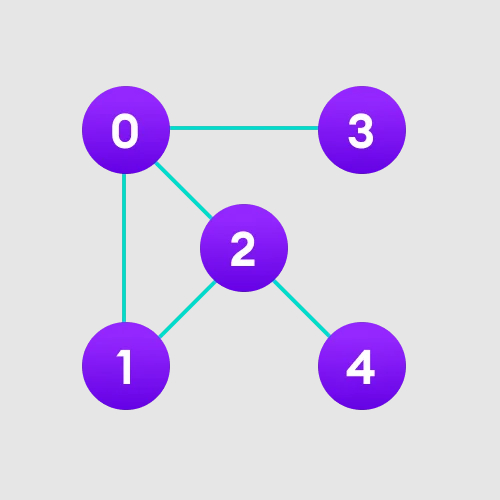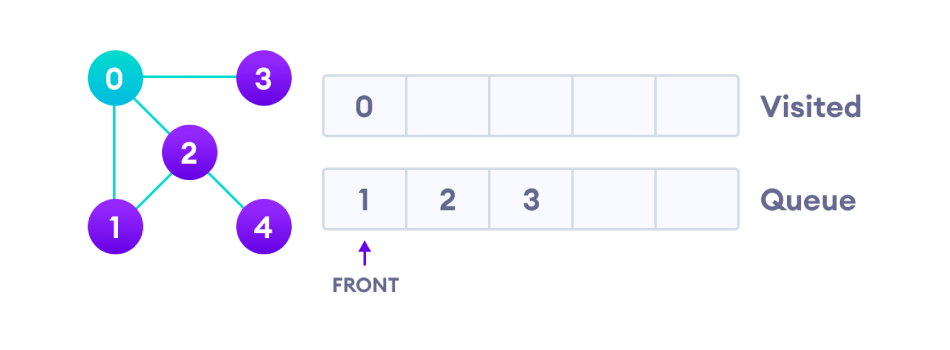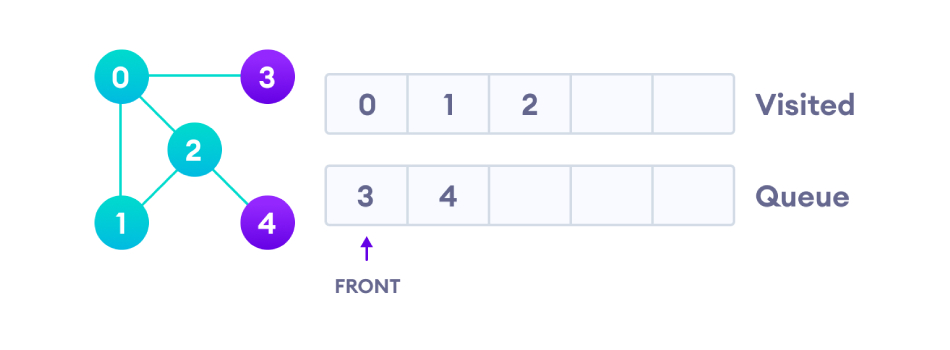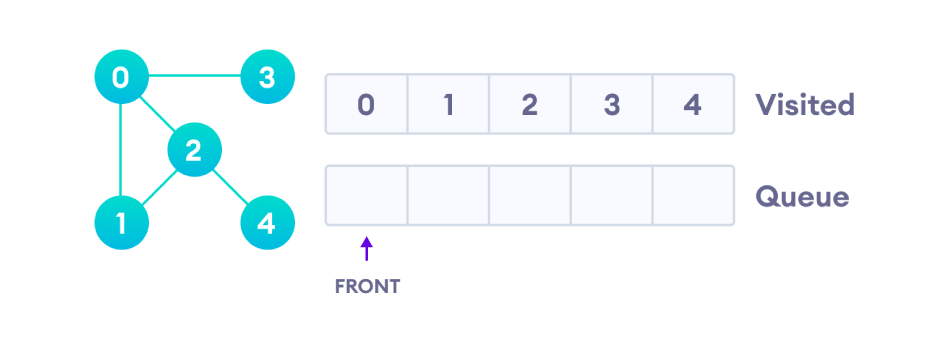深入解析BFS演算法原理,帶圖解說明,並附帶Python程式碼實作BFS演算法
- PHPz轉載
- 2024-01-22 23:24:051534瀏覽
BFS又稱為廣度優先搜索,和DFS演算法一樣都是遞歸演算法,不同的是,BFS演算法透過佇列,在避免循環的同時遍歷目標所有節點。
BFS演算法的工作原理圖解
以具有5個節點的無向圖為例,如下圖:

從節點0開始,BFS演算法首先將其放入Visited清單並將其所有相鄰節點放入佇列。

接下來,存取佇列前面的節點1,並前往節點1相鄰的節點。因為節點0已經被存取過,所以訪問節點2。

節點2有一個未存取的相鄰節點4,但因為節點4在佇列的最後,因此我們要先存取位於佇列前面的節點3。

佇列中只剩下節點4沒有被訪問,所以最後訪問節點4。

至此,已經完成了此無向圖的廣度優先遍歷。
BFS演算法的偽代碼
create a queue Q mark v as visited and put v into Q while Q is non-empty remove the head u of Q mark and enqueue all (unvisited) neighbours of u
Python程式碼實作BFS演算法
import collections
def bfs(graph, root):
visited, queue = set(), collections.deque([root])
visited.add(root)
while queue:
vertex = queue.popleft()
print(str(vertex) + " ", end="")
for neighbour in graph[vertex]:
if neighbour not in visited:
visited.add(neighbour)
queue.append(neighbour)
if __name__ == '__main__':
graph = {0: [1, 2], 1: [2], 2: [3], 3: [1, 2]}
print("Following is Breadth First Traversal: ")
bfs(graph, 0)以上是深入解析BFS演算法原理,帶圖解說明,並附帶Python程式碼實作BFS演算法的詳細內容。更多資訊請關注PHP中文網其他相關文章!
陳述:
本文轉載於:163.com。如有侵權,請聯絡admin@php.cn刪除

